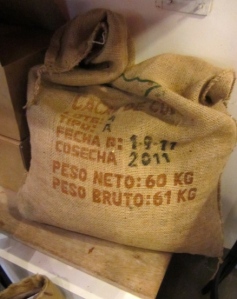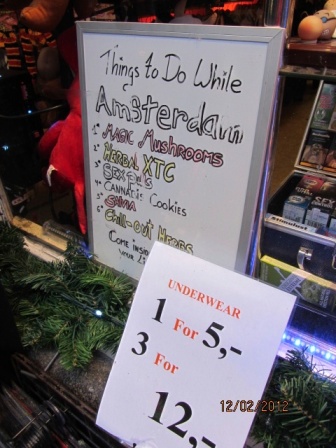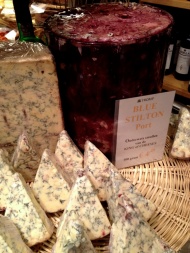I am reminded of Marcel Duchamp: a readymade. You know the story of the most famous one, right? To make a point about art and modern culture in 1917, he acquired an ordinary porcelain urinal, placed it business end up, signed it R. Mutt, and declared it art. Art not just for the eyes; instead, it was meant to question the very notion of seeing art, to stimulate the senses with a much wider range of stimuli — even repugnance and a reminder of unpleasant, necessary truths.
How is a herring barrel in a history museum similar? This one, the preserver preserved at Amsterdam’s Jewish Historical Museum, is quite handsome, actually: sturdy, rotund, golden brown, made antiseptic in its lit vitrine, but grimed and bumped and nicked as it traveled around the globe. Who knows: did it go from the Baltic seaboard to the New World, filled with the salted herring that nourished the sailors and enriched the burghers? Did a slave from Ghana scratch a doodle into the side during a moment’s rest, or was it kicked by an angry Chinese tradesman upon a sour deal with an unscrupulous VOC rep? Or did it get rolled around the streets of the Albert Cuyp market by Jewish vendors eking out a living in fishy carts circling the city?
And how did this ordinary, workaday object become extraordinary? Survival alone? (Hey, who could knock THAT.) Or did the herring work some artistic magic? Did the salt slowly, batch after batch, mellow out the rough-hewn lumber planed and strapped into barrel shape? Did the artiste (or machine?) who penned the flourishing ‘H’ of ‘Haring Ton’ feel pride in that specimen? Did he (it) squint with a critical assessment, cough to clear some inky dust out of his (its) throat? When we ask these types of questions, we don’t just see it as a barrel, or even just as a historical artifact. We appreciate it for its singularity, beauty even. And then we think gosh, it must

…smell. I’ve got good news and bad news today. The good news is that my piece for NPR’s The Salt appeared this morning on a topic very much related to this herring barrel: Dutch pickles and trade. See it here!
The bad news is that something weird happened with my images, and the resolution is too poor to accompany the article. I’ll figure out what went wrong, but in the meanwhile, I wanted to share some of the wonderful pickles I captured in Amsterdam at fourth generation pickler Fred Ooms’ de Leeuw Pickles and renowned Dutch-Surinamese caterer Mavis Hofwijk’s Surinaams Buffet Catering. I’m so thrilled to have met Fred and his wife Monique, and their charming son, and Mavis and her charming daughter Candice, all thanks to artist and scholar Karin Vaneker.



































You must be logged in to post a comment.